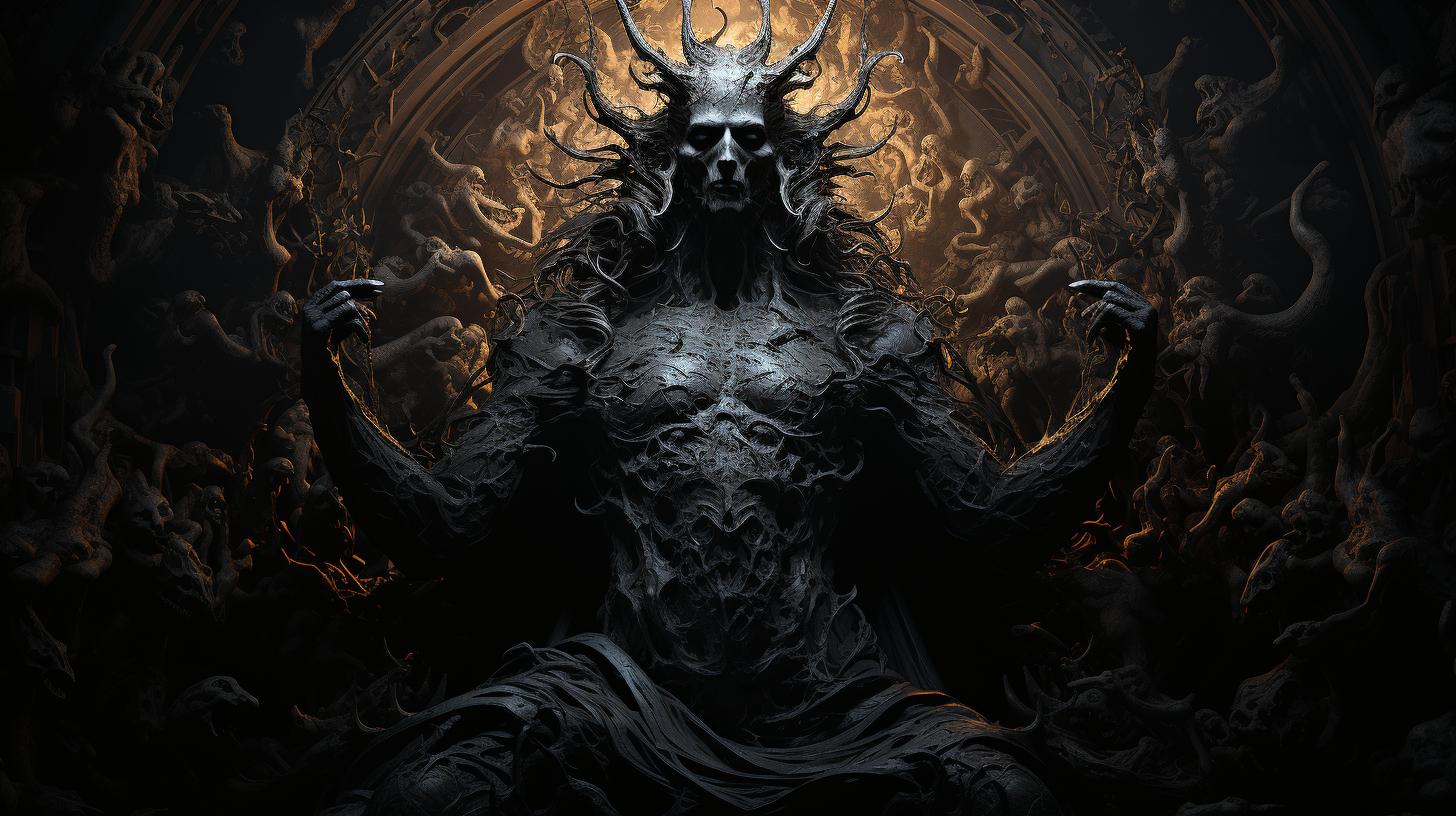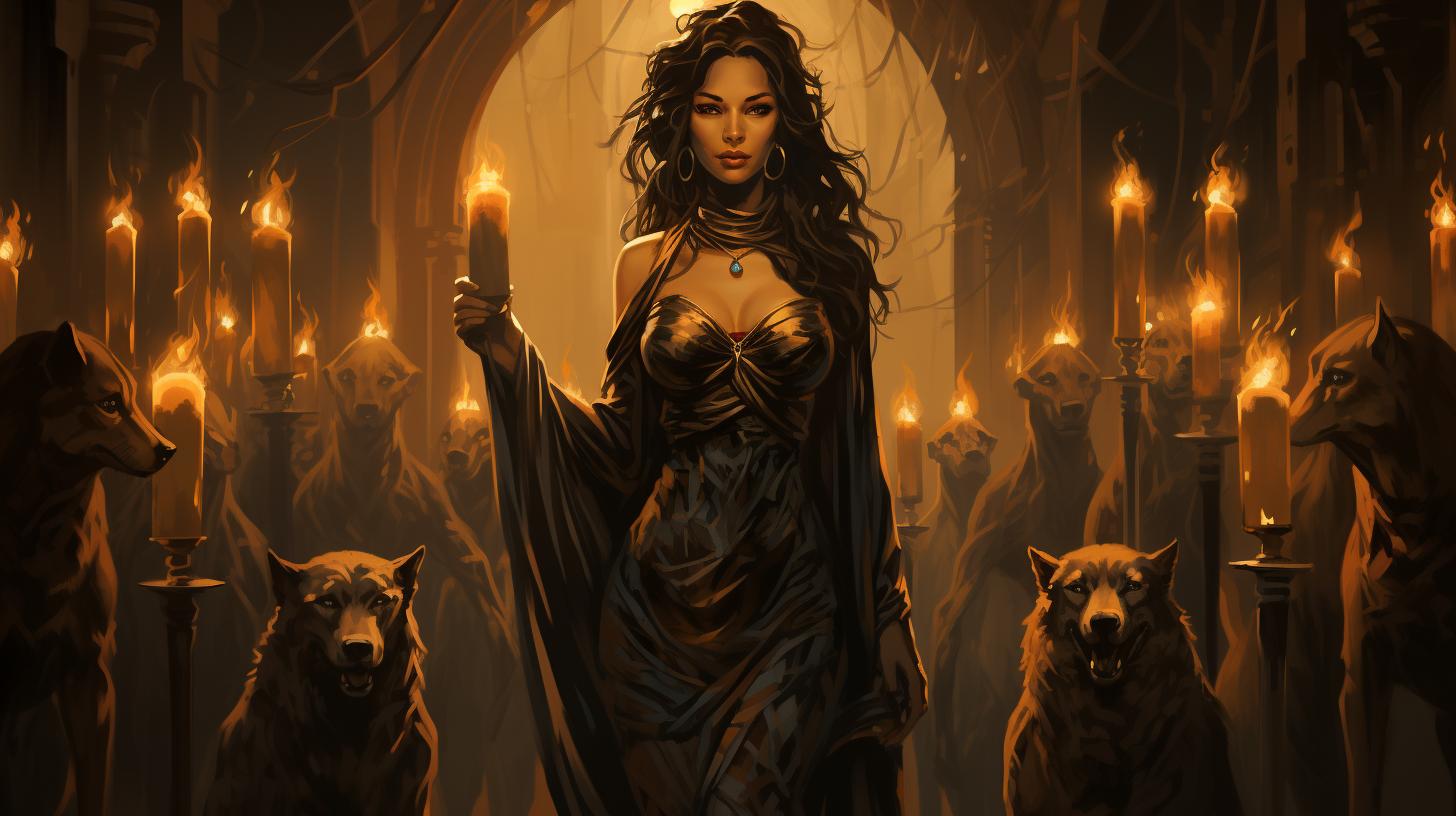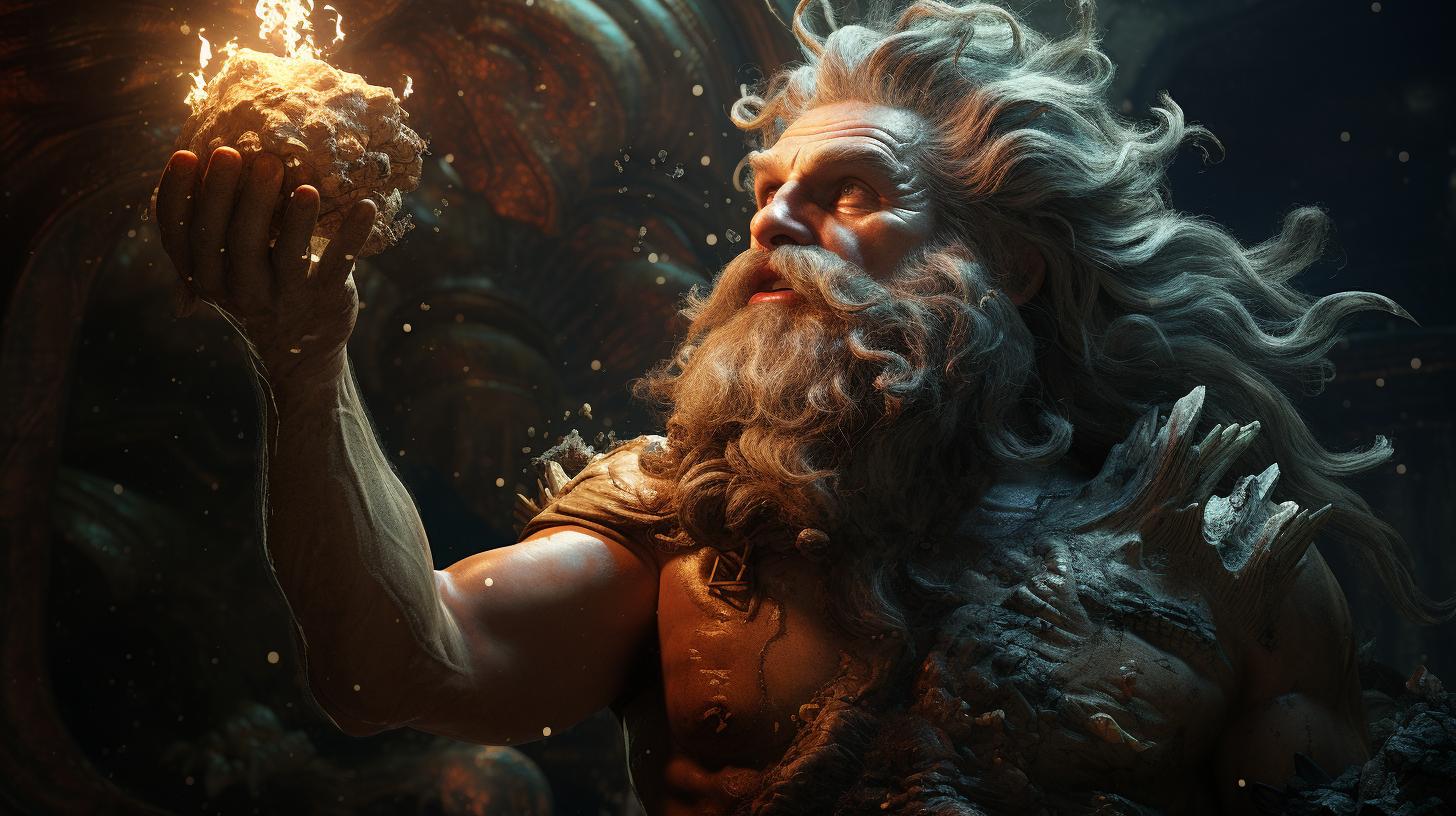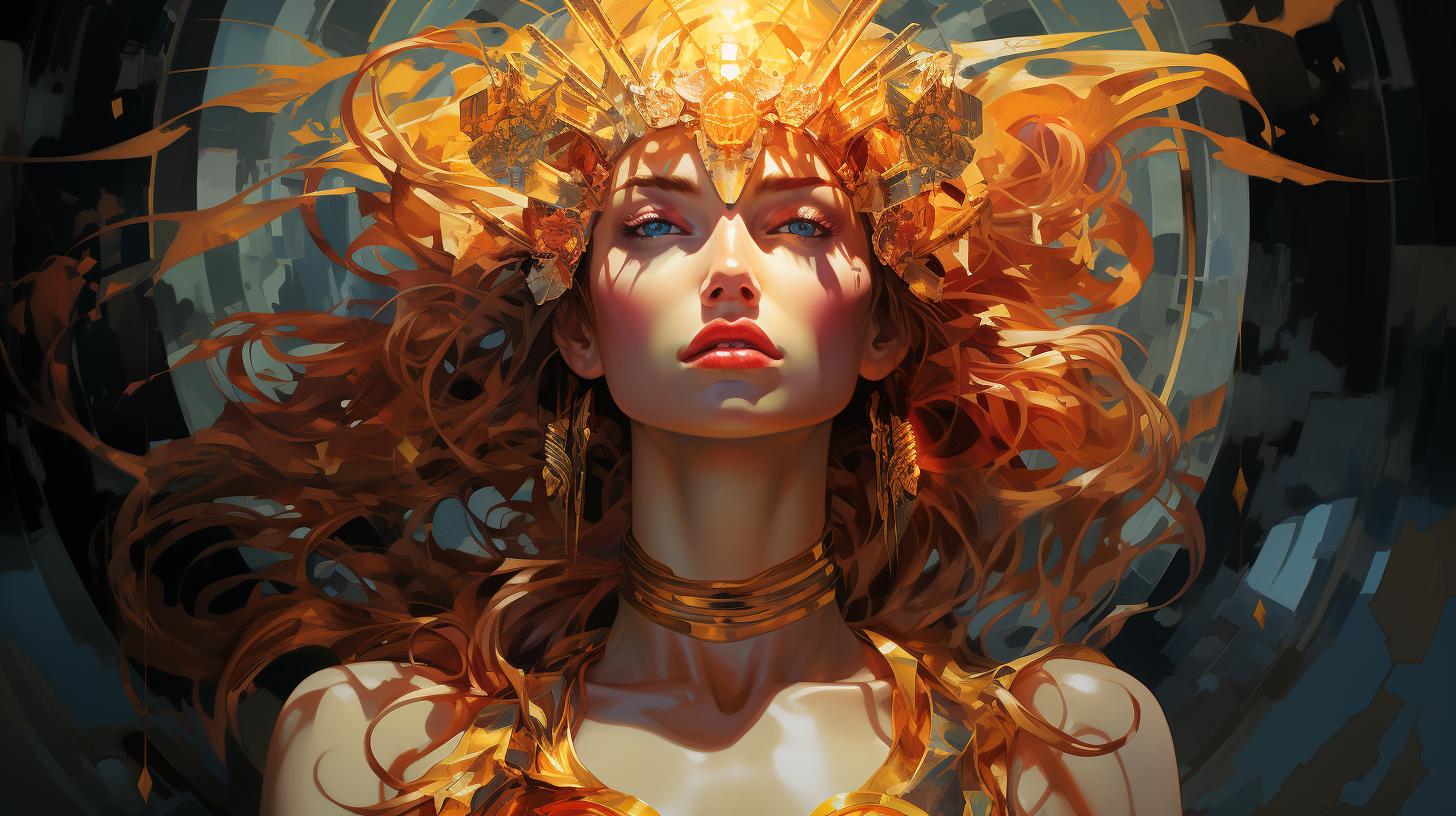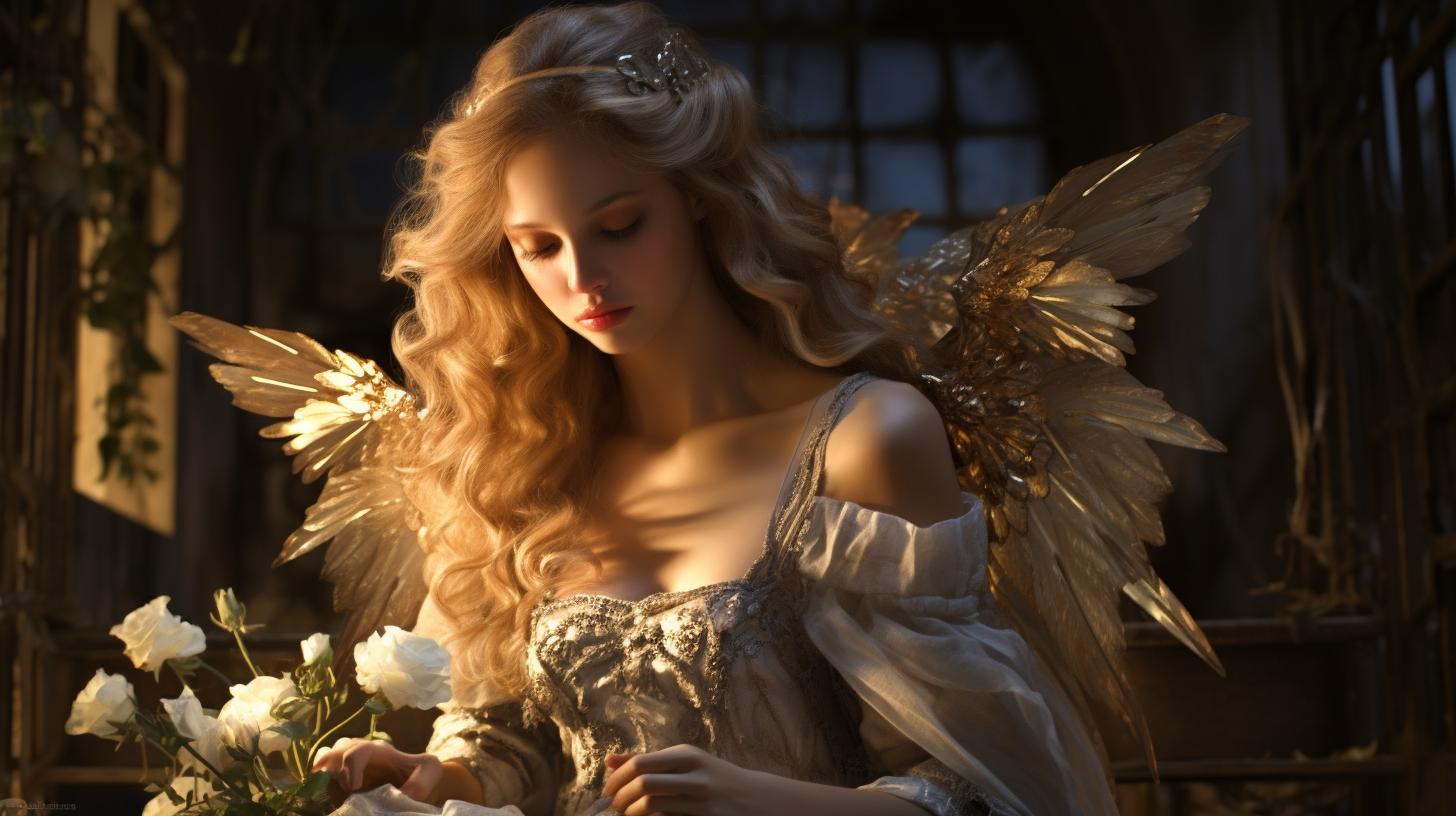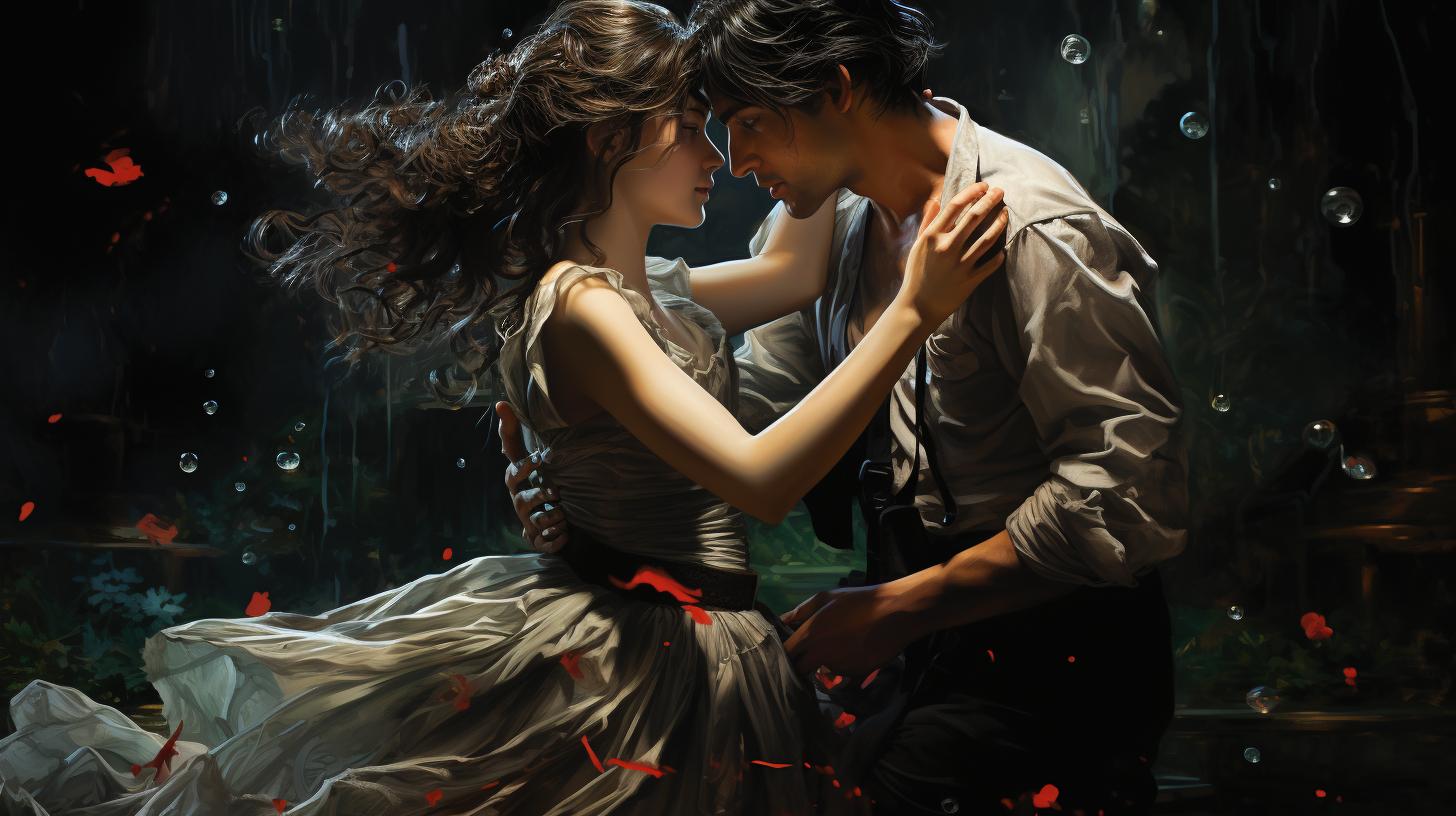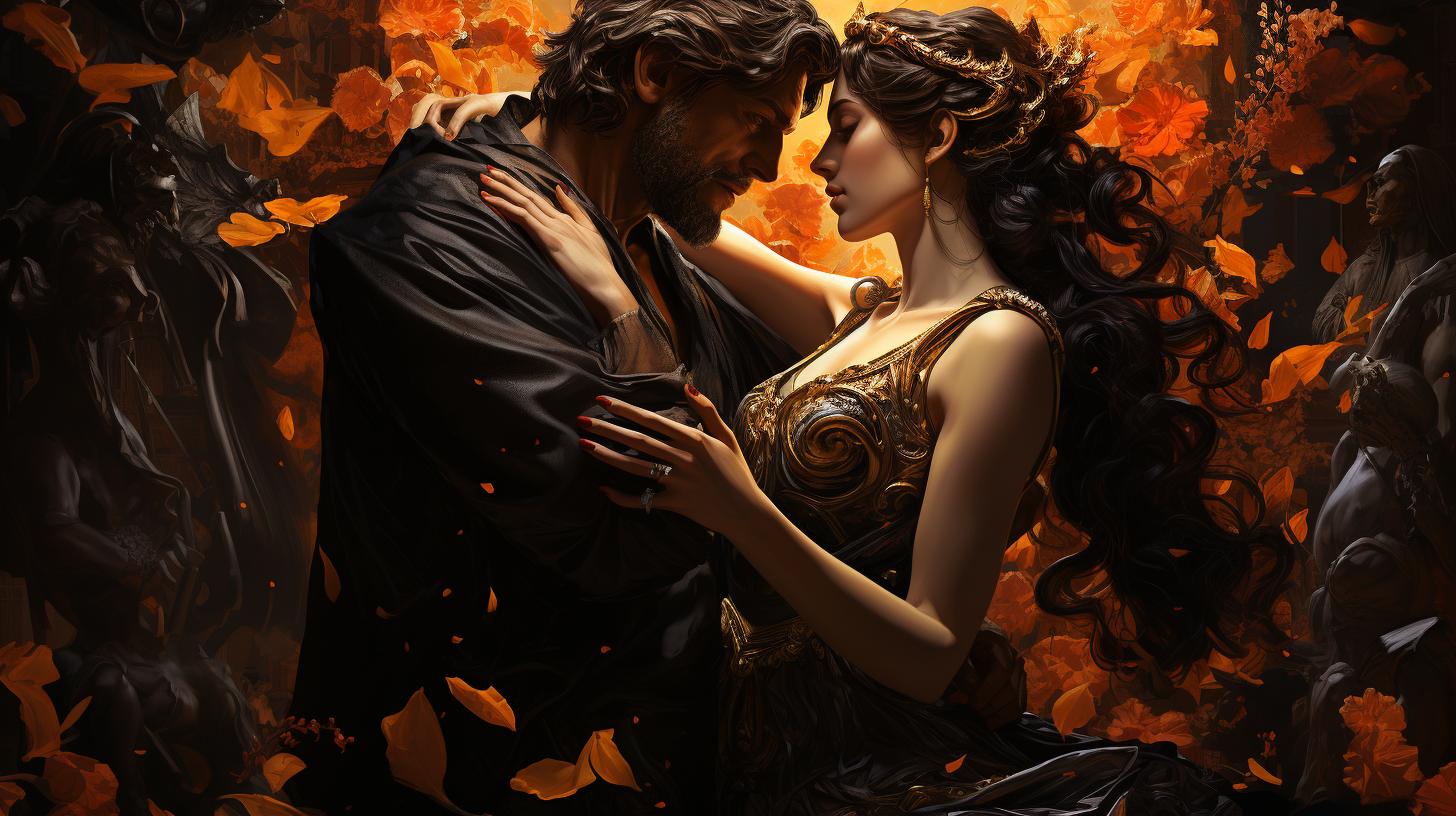Exploring the Depths of Chaos: The Primordial Deity in Greek Mythology
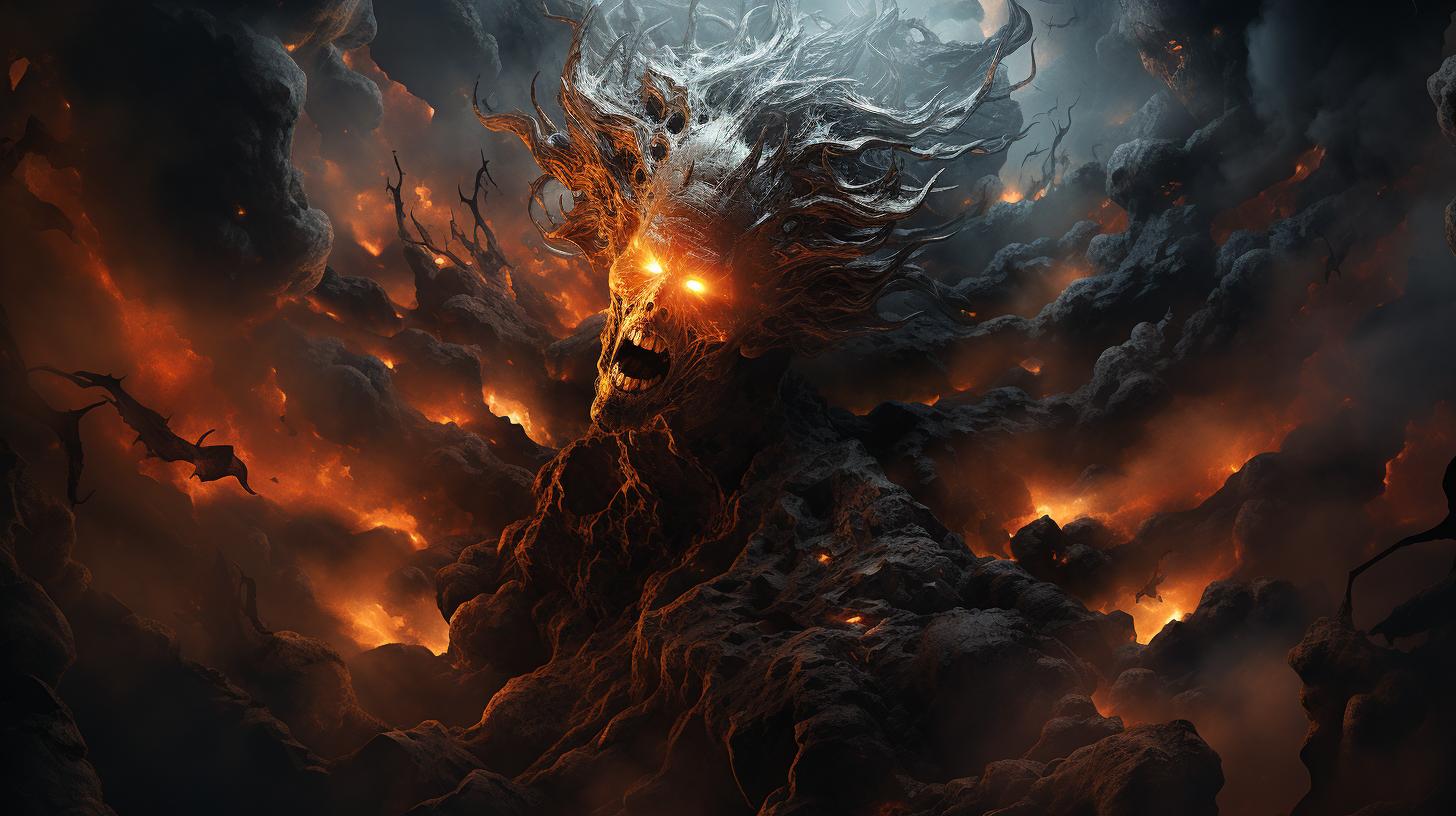
The Greek God of Chaos, known as Khaos, holds a significant place in ancient Greek mythology. Believed to be the primordial deity of creation, Khaos represents the formless void that existed before the establishment of the world.
This deity, often considered as the god of chaos and destruction, embodies the initial state of emptiness and confusion from which the universe and all gods emerged, according to ancient texts.
Throughout different cultures, this concept of chaos is recognized, from the Greek deities associated with it, such as Gaia and Nyx, to its presence in Egyptian and Mesopotamian mythologies.
Additionally, the goddess Eris, known for her association with discord, also plays a role in the realm of chaos. Explore the fascinating world of Greek mythology and uncover the enigmatic entity known as the Greek God of Chaos, whose powers and influence over the primordial cosmos have intrigued scholars and enthusiasts alike.
Etymology of Chaos
The term “chaos” derives from the Greek language, with its root being the Greek word “khaos.” In ancient Greek, “caos” signifies emptiness, a vast void, or an abyss. It is related to ancient Greek verbs meaning “to gape widely” and “to yawn.”
The etymology reflects the deep-seated belief in chaos as a profound and boundless space, preceding the ordered cosmos as we know it.
The ancient Greeks associated chaos with the concept of a formless void that existed before the creation of the universe.
It represented a state of immense emptiness or darkness. The philosopher Pherecydes of Syros interpreted chaos as a primordial substance resembling water, formless yet capable of differentiation.
This notion of chaos as a void or void-like state is not limited to Greek mythology.
In early Christian theology, chaos refers to the empty or abyssal space created by the separation of heaven and earth. Furthermore, chaos carries various connotations beyond emptiness. It may also denote space, the expanse of air, the lower abyss, or infinite darkness.
The ancient Greeks perceived chaos as residing beneath the Earth but above Tartarus, the deep abyss of the underworld. It was believed that chaos could be impacted by the thunderbolts of Zeus, the king of the gods.
In essence, the etymology of chaos encompasses a rich range of meanings, from emptiness and formlessness to vastness and darkness, giving insight into the nature of this enigmatic concept in Greek mythology.
Greek God of Chaos in Ancient Greek Religion
In ancient Greek religion, the concept of Chaos played a significant role, representing the formless void and the state preceding the creation of the universe. Chaos, known as Khaos in Greek mythology, was considered the primordial deity from which all existence emerged.
Often referred to as the god of chaos and destruction, this deity symbolizes the beginning of all things, encompassing both the potential for creation and the menace of obliteration within its vast, formless expanse.
According to Hesiod, a Greek poet of the Archaic period, Chaos was the first deity to emerge from the primal void. From Chaos, other key deities like Gaia (the Earth), Tartarus (the Underworld), and Eros (Love) originated.
Chaos, often depicted as a dark, swirling mass, represented the infinite potentiality from which the cosmos and its divine beings manifested.
While other gods and goddesses were associated with Chaos, Khaos itself was not personified as a distinct entity with a defined personality.
Instead, it symbolized the amorphous, indeterminate nature of the preexisting state. It was the boundless expanse, the primary energy that preceded the structured reality. The Greek perception of Chaos evolved over time, with different philosophers and poets offering their interpretations.
Some philosophers viewed Chaos as the underlying essence of all things, while others saw it as a transitional state between the preexisting void and the formation of the universe.
Ultimately, in ancient Greek religion, Chaos represented the fundamental concept of the formless void, the initial state preceding creation.
It was the fertile ground from which divine beings and the physical world were brought forth, serving as a crucial element in the rich tapestry of Greek mythology and cosmology.
The Role of Chaos in Creation Mythology
In Greek mythology, Chaos, often envisioned as the Greek chaos god, plays a pivotal role in the universe’s creation. This primordial entity, signifying the formless void from which everything emerged, represents the state of absence before divine forces began shaping the cosmos.
Chaos, or Khaos as it is sometimes known, is not just a state but a deity with vast, undefined powers, embodying the ultimate source of potentiality.
Chaos is frequently depicted as a vast, dark abyss or a swirling mass of undefined matter, lacking order, structure, or boundaries.
It is the epitome of infinite potential, where anything can materialize. This boundless capacity allows for the emergence of the first deities and forces of creation from Chaos. Gaia, the Earth goddess; Tartarus, the abyss; and Eros, the god of love, all sprung from this chaotic void.
They signify the cosmos’s varied aspects, establishing the groundwork for the world’s creation.
Chaos’s role in creation mythology underscores the boundless possibilities preceding the cosmos’s structuring by the gods. It highlights transformation and the ongoing cycle of creation and destruction that defines the natural world.
Chaos embodies the inherent uncertainty and potential upheaval inherent in creation. It conveys the notion that order springs from disorder and that existence is birthed through transformative events.
Overall, Chaos serves as a cornerstone in Greek mythology, symbolizing the primary forces in the universe’s creation.
It underscores the dynamic interplay between order and disorder, structure and formlessness, offering profound insights into creation’s intricate nature.
Chaoskampf: The Battle Against Chaos
While this theme recurs across various cultures, it is profoundly significant in Greek mythology, illustrating the clash between chaos and order, darkness and light, epitomized by divine triumph over chaos’s forces.
The narrative of Chaoskampf reflects the battle to instill order and harmony from chaos, aiming to forge a balanced world. Greek myths abound with tales of divine figures, such as Zeus’s battles against the Titans and Typhon, Apollo‘s confrontation with Python, and Perseus‘s encounters with Cetus and Medusa. These stories highlight the essential belief that primordial chaos must be subdued to pave the way for civilization and a stable cosmos.
Beyond mythology, Chaoskampf has deeper, symbolic meanings, mirroring the human endeavor to navigate and surmount life’s chaotic and destructive aspects. It represents the quest for order, balance, and personal development, underscoring the perpetual conflict between the chaotic and the structured, both cosmically and within the human psyche.
The significance of Chaoskampf in Greek mythology indicates the cultural understanding of the necessity to confront chaos in order to establish a harmonious existence. This ongoing battle against chaos underscores the timeless human pursuit of stability, balance, and the triumph of order over disorder.
Depictions of Chaos in Ancient Art
Ancient art provides us with fascinating depictions of Chaos, offering insights into how this concept was visually represented in various cultures.
In Greek mythology, Chaos is often portrayed as a shapeless void, symbolizing the primordial state before the creation of the universe.
Artists depicted Chaos as a swirling mass of darkness or as a vast, empty space. These artistic representations aimed to capture the idea of formlessness and the vast potential held within Chaos.
One common motif in ancient Greek art is the portrayal of Chaos, or Khaos, alongside other primordial deities. Chaos, often depicted alongside Gaia, the goddess of the Earth, or alongside Nyx, the goddess of the night, embodies the formless state from which the universe was conceived.
These artistic compositions sought to convey the interconnectedness of these deities and their roles in the creation myth, highlighting Chaos’s integral role and its vast, enigmatic powers in the tapestry of creation.
Ancient Egyptian art also provides interesting depictions of Chaos. In Egyptian mythology, Chaos is personified by Apophis, a serpent-like deity believed to be the enemy of the sun god Ra.
Apophis is often portrayed as a colossal serpent or a snake with multiple heads, symbolizing the chaotic forces that threaten the order and harmony of the cosmos, much like Khaos in Greek mythology.
Mesopotamian art showcases Tiamat, the goddess of chaos and the sea. Tiamat is often depicted as a fearsome dragon or a monstrous sea creature, a representation emphasizing her power and the tumultuous nature of the chaotic forces she embodies, akin to the depiction of Chaos or Khaos in Greek thought.
Overall, the depictions of Chaos in ancient art serve as a visual representation of the intangible concept and provide a means to explore the significance of Chaos in mythology and the creation of the world.
These portrayals, whether as a Greek goddess of chaos or a symbol of formlessness, illustrate the universal recognition of chaos as a primordial and powerful force.
Greek Deities Associated with Chaos
In Greek mythology, several deities are closely associated with chaos, each representing different aspects of its nature.
These gods and goddesses, including Gaia, Nyx, Erebos, and Eros, offer insight into the multifaceted concept of chaos in ancient Greek religion. Let’s explore four notable deities connected to chaos:
Gaia: Goddess of the Earth and Chaos
Gaia, often referred to as Mother Earth, is one of the primordial deities in Greek mythology.
She personifies both the Earth itself and the concept of chaos, embodying the untamed and unpredictable powers inherent in nature. Her portrayal as a maternal figure nurturing all life forms emphasizes the interconnectedness of chaos, creation, and the sustenance of life.
Nyx: Goddess of the Night and Darkness
Nyx, the goddess of night, holds a significant role in Greek mythology. As a personification of darkness, Nyx embodies the mysterious and hidden aspects of the cosmos. Her association with chaos stems from the transformative power that darkness possesses, representing the vastness and unknown depths of the universe.
Erebos: God of Darkness and Shadow
Erebos, often depicted alongside Chaos or Khaos in Greek mythology, personifies darkness and shadow. As the god of primordial darkness residing in the underworld’s depths, Erebos’s connection to chaos lies in the obscurity and enigma that darkness symbolizes.
He represents the realm of the unseen, emphasizing hidden forces within the cosmic order, akin to the mysterious nature of Khaos itself.
Eros: God of Love and Desire
Eros, the god of love and desire, also has associations with chaos. While primarily known for his role in inspiring passion and attraction, Eros holds the power to disrupt and ignite chaotic emotions within individuals.
His presence signifies the unpredictability and transformative nature of love, highlighting how chaos intertwines with human emotions and desires.
In Greek mythology, these deities provide intriguing glimpses into the complex and diverse aspects of chaos.
Gaia, Nyx, Erebos, and Eros all contribute to the understanding of chaos as a fundamental force in the ancient Greek worldview, offering unique insights into the complexities that lie beneath the surface of the ordered world.
Chaos in Greco-Roman Mythology
In Greco-Roman mythology, chaos holds a pivotal role as the primordial state preceding the creation of the cosmos. This concept of chaos, envisioned as a formless void or an infinite deep, served as the birthplace from which the universe and the great gods emerged.
While chaos itself is not personified as a deity, it is closely intertwined with several powerful gods and goddesses in the pantheon, including the foundational forces of the ancient world.
Gaia: Goddess of the Earth and Chaos
Gaia, also recognized as Gaea, symbolizes both the Earth the and chaos.
As a goddess, Gaia represents the physical realm and is believed to have originated directly from the primal chaos. She is venerated as the mother of all life, birthing the Titans, the Giants, and various other deities, thus embodying the fertile and nurturing aspect of the earth amid the early chaos.
Nyx: Goddess of the Night and Darkness
In the tapestry of Greco-Roman mythology, Nyx, the goddess of the night, emerges from the primordial darkness, closely linked to chaos. Nyx, one of the earliest and greatest deities, embodies the eternal night, bringing the light of stars and the veil of darkness across the sky.
Her presence underscores the profound connection between chaos and the cyclical nature of time and existence.
Erebos: God of Darkness and Shadow
Erebos, also known as Erebus, personifies the darkness, shadows, and the underworld.
Often depicted as emerging from chaos, Erebos occupies the shadowy spaces beneath the Earth, in the ancient near East of the Greek underworld. As a primordial deity, Erebos’s existence highlights the intriguing interplay between light and darkness, order and chaos, in the early cosmological narratives.
Eros: God of Love and Desire
Eros, the graceful god of love and desire, represents a fundamental force emanating from chaos. Often regarded as the first thing to exist, Eros embodies the primal energy that catalyzes creation, procreation, and the emergence of life and order from the formless chaos.
His role signifies the powerful, transformative potential of love and desire to bring forth harmony from chaos.
In conclusion, chaos in Greco-Roman mythology symbolizes the primordial state that precedes the creation of the world.
Although not a deity in itself, chaos is intricately linked to powerful gods and goddesses such as Gaia, Nyx, Erebos, and Eros. These divine entities represent different facets of chaos and play crucial roles in the mythological narratives that shaped the beliefs and cultures of the ancient Greeks and Romans, illustrating the dynamic interplay between chaos and order, darkness and light, in the foundation of the universe.
Chaos in Egyptian Mythology
In Egyptian mythology, chaos is personified by the god Apophis. Also known as Apep, Apophis is depicted as a colossal serpent or snake, representing the forces of chaos and disorder. He is the eternal enemy of Ra, the sun god and the embodiment of creation and order.
In Egyptian cosmology, Apophis is believed to be constantly attempting to devour the sun every night, trying to prevent its rebirth at dawn. His battles with Ra symbolize the eternal struggle between order and chaos in the Egyptian worldview.
The defeat of Apophis and the triumph of Ra ensure the continuation of life and the maintenance of cosmic harmony.
Apophis is often depicted as a monstrous serpent coiled around the world, with his body representing the primordial chaos that threatened to undo the order established by the gods.
His destructive nature is emphasized through religious rituals and spells aimed at warding off his influence and ensuring the protection of creation.
In Egyptian mythology, the concept of chaos and the battle against it are intricately woven into the religious and cosmological beliefs of the ancient Egyptians.
The existence of Apophis highlights the Egyptians’ understanding of the constant struggle between order and chaos, and the importance of upholding ma’at, the divine principle of harmony and balance.
The depiction of Apophis as a malevolent serpent serves as a reminder of the ongoing presence of chaos in the world and the necessity for vigilance in maintaining cosmic order.
The myth of Apophis offers a fascinating insight into ancient Egyptian beliefs about the fundamental nature of the universe and the eternal struggle between order and chaos.
Chaos in Mesopotamian Mythology
In Mesopotamian mythology, chaos was personified by the goddess Tiamat. She represented the primordial depths of the sea and the chaotic forces that resided within it.
Tiamat was often depicted as a ferocious dragon or serpent, embodying the untamed power of chaos.
According to the Enuma Elish, the Babylonian creation myth, Tiamat and her consort Apsu, the god of fresh water, initially existed in a state of chaos.
However, their union eventually led to the birth of the younger gods, who became too noisy and disruptive for the older deities. In response, Apsu sought to eliminate them, but was ultimately slain by his own son, Ea.
Tiamat, overcome with rage and grief, decided to avenge her consort’s death by creating an army of monstrous creatures.
She unleashed her wrath upon the younger gods, but they found a champion in the god Marduk. In a climactic battle, Marduk confronted Tiamat and ultimately slew her, splitting her body in half to create the heavens and the earth.
Tiamat’s defeat marked the establishment of order and the triumph of the younger gods over chaos. However, her legacy lived on in the concept of primordial chaos that permeated Mesopotamian cosmology.
The chaotic forces represented by Tiamat continued to be recognized as a potent and necessary aspect of the universe, constantly held in check by the divine powers of order.
Throughout Mesopotamian history, Tiamat remained an influential symbol of chaos and the untamed forces of nature.
Her portrayal as a powerful and fearsome deity underscored the Mesopotamians’ respect for the primal and unpredictable aspects of existence, reminding them of the delicate balance between order and chaos.
Eris: Goddess of Discord and Chaos
One of the intriguing deities associated with chaos in Greek mythology is Eris, the goddess of discord and chaos.
Often identified with the chaos Greek god, Eris plays a significant role in the tales of ancient Greece and is famously known for sparking the events that led to the Trojan War.
Eris is depicted as a mischievous and capricious goddess, always causing strife and discord among gods, mortals, and even heroes. She embodies the chaotic forces in Greek mythology, often portrayed as a troublemaker, delighting in sowing the seeds of discord and watching chaos unfold.
One particular event propelled Eris into the center stage of Greek mythology. It was the famous Judgment of Paris, where Eris, displeased that she was not invited to a divine wedding, threw a golden apple inscribed with the words “For the Fairest” among three prominent goddesses: Hera, Athena, and Aphrodite. This act ignited a fierce rivalry between the goddesses, ultimately resulting in the Trojan War.
As the goddess of chaos, Eris personifies the disruptive forces that can arise when discord takes hold. She represents the unpredictable aspects of life and reminds mortals of the ever-present potential for conflict and strife in the world.
Although Eris is not revered with temples in ancient Greece and is considered more as a personification, her role in Greek mythology serves as a cautionary tale about the dangers of discord and the chaos it can bring.
Eris’s Roman equivalent is Discordia, reflecting her function as a source of discord in both Greek and Roman mythology. Her presence serves as a reminder that harmony and order should be cherished, as chaos and discord can lead to disastrous consequences.
Comparisons of Chaos in Different Cultures
The concept of chaos and its associated deities can be found in various mythologies across different cultures. Let’s explore how chaos is depicted and represented in ancient Greek, Roman, Egyptian, and Mesopotamian mythologies.
Greek Mythology
In Greek mythology, chaos is personified by the primordial deity Khaos, the first thing to emerge and represents the formless void from which the world originated. This embodiment of chaos underlines the powers inherent in the primordial state of the universe.
Additionally, several other deities are closely associated with chaos in Greek mythology:
- Gaia: Known as the Goddess of the Earth, Gaia is also associated with chaos due to her connection with the primal elements and the formless nature of the Earth.
- Nyx: Nyx, the Goddess of the Night, represents the darkness and mysterious aspects often linked with chaos.
- Erebos: Erebos, the God of Darkness and Shadow, is another deity associated with chaos, representing the obscure and unknown.
- Eros: As the God of Love and Desire, Eros embodies the chaotic and uncontrollable nature of passion and emotions.
Roman Mythology
In Roman mythology, chaos is acknowledged as Chaos, representing the primordial state of the universe.
Chaos is associated with the initial chaotic energy that was eventually organized to form the world.
Egyptian Mythology
The Egyptian mythology features Apophis, the god of chaos and adversary to Ra, the sun god. Depicted as a serpent, Apophis symbolizes the constant struggle between chaos and order, darkness and light.
Mesopotamian Mythology
Within the Mesopotamian pantheon, Tiamat is the goddess of chaos and the sea. She represents the turbulent and primordial forces of chaos that existed before the world’s creation.
These comparisons reveal that various cultures incorporate concepts of chaos into their mythologies.
Through different divine figures, chaos represents the untamed and unpredictable forces often associated with the pre-creation state of the universe. Exploring the diverse interpretations of chaos across cultures provides a fascinating glimpse into humanity’s collective understanding of the chaotic and formless origins of existence.
.











